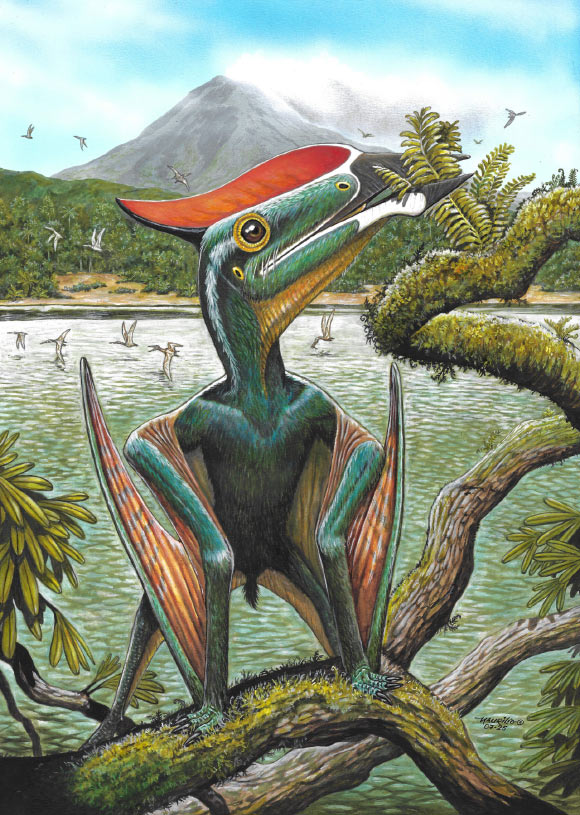Paleontologists from China and Brazil say they have found a total of 320 phytoliths — microscopic, rigid bodies made of mineral deposits that form inside plant cells — inside the fossilized stomach of a pterosaur species called Sinopterus atavismus.
Pterosaurs, a group of extinct reptiles from the Mesozoic Era, were the earliest vertebrates to evolve powered flight capabilities.
Among the several questions surrounding these flying reptiles is their dietary habits, which remain poorly understood.
Various dietary hypotheses have been proposed for different pterosaur groups, encompassing insectivory, piscivory, carnivory, durophagy, herbivory/frugivory, filter-feeding, and generalist diets.
As widely acknowledged, an incontrovertible piece of evidence is stomach contents, which are extremely rare.
Besides the presence of scales associated with the ribcage of Eudimorphodon from the Late Triassic of Italy, there are only five confirmed cases of pterosaur stomach contents reported, all related to Rhamphorhynchus from the Late Jurassic Solnhofen Limestone of Germany.
They are mainly composed of fish remains, with some unidentified objects.
In a new study, Dr. Xiaolin Wang from the Institute of Vertebrate Paleontology and Paleoanthropology at the Chinese Academy of Sciences and colleagues examined the fossilized stomach contents of Sinopterus atavismus, a species of tapejarid pterodactyloid pterosaur that lived in China around 120 million years ago.
They detected numerous small gastroliths within the stomach content and extracted 320 phytoliths from a small piece of the content.
“Phytoliths are microscopic silica structures formed during plant growth, exhibiting distinct morphologies across plant species and even within different parts of the same plant,” the paleontologists said.
“This discovery marks both the first phytolith extraction from any pterosaur and the second documented pterosaur specimen containing gastroliths.”
To confirm that Sinopterus atavismus was truly a plant-eater, the researchers explored other possible explanations.
“First, we ruled out contamination by showing that the surrounding rock contained none of the phytoliths found in the stomach,” they said.
“Next, we considered whether the plant material might have come from eating other plant-consuming animals.”
“But Sinopterus atavismus had a fast, bird-like metabolism — if it had eaten vertebrates or insects, some traces like bones, scales, or hard insect shells would have remained in its stomach, yet none were present.”
“The idea that it ate soft-bodied creatures like caterpillars also didn’t hold up: why would it need so many stomach stones if it wasn’t grinding tough food?”
“These stones are typically used by animals to break down hard materials like insect shells or plants, making them unnecessary for digesting soft prey.”
“Finally, earlier studies of Tapejara wellnhoferi — a close relative of Sinopterus atavismus — showed it had strong jaws suited for plant-eating, further supporting this conclusion.”
“Therefore, the phytoliths represent direct dietary intake, while the gastroliths functioned as grinding tools for plant material processing.”
The team’s paper was published in the October 15, 2025 issue of the journal Science Bulletin.
_____
Shunxing Jiang et al. 2025. First occurrence of phytoliths in pterosaurs — evidence for herbivory. Science Bulletin 70 (19): 3134-3138; doi: 10.1016/j.scib.2025.06.040









